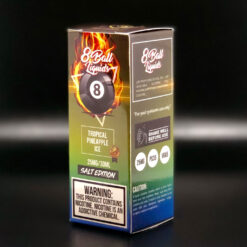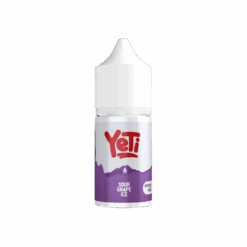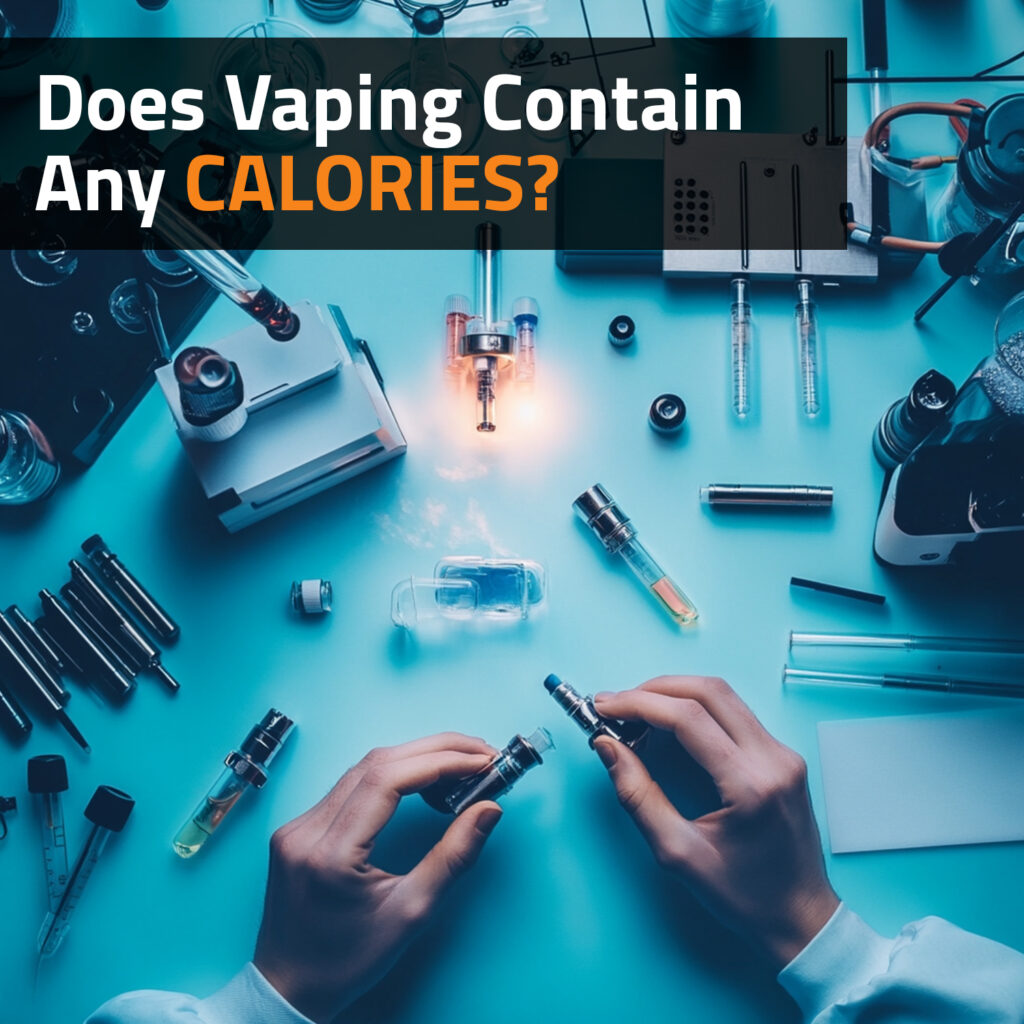Vaping has become a common alternative to traditional smoking, offering users a wide array of flavours and nicotine levels without the combustion of tobacco. While many people turn to vaping to cut down on cigarette smoking or as a less harmful habit, others – particularly those focused on fitness, dieting, or calorie tracking – often wonder: Does vaping contain any calories? And if so, could those calories have any real impact on body weight or metabolism?
In this comprehensive article, we will explore the nutritional science behind vaporised e-liquids, whether vaping contributes to your daily caloric intake, and if it has any consequences for your health or weight management goals.
Understanding What Is In E-Liquid
To assess whether vaping contains calories, it is important to understand what is actually in the e-liquid (also called vape juice or vape liquid). Most standard e-liquids contain four main ingredients:
- Propylene Glycol (PG)
- Vegetable Glycerin (VG)
- Nicotine (optional)
- Flavorings
A Breakdown Of Each Of These Components
- Propylene Glycol (PG): A synthetic liquid substance used to carry flavour. It is colourless and nearly tasteless. PG is also used in food products and medications and does contain a small amount of calories – about 4 calories per gram.
- Vegetable Glycerin (VG): A natural compound derived from vegetable oils. It is thicker than PG and adds sweetness and vapour production. VG also contains about 4 calories per gram.
- Nicotine: While nicotine is a powerful stimulant, it does not contribute significant calories to vape juice. It is metabolically active but not calorically dense.
- Flavourings: These are typically food-grade ingredients. While some flavourings may contain trace calories in their raw state, their amounts in e-liquid are so minimal that their caloric contribution is negligible.
So, Are There Calories In E-Liquid?
Yes – but in trace amounts.
The calories found in vape juice are primarily from PG and VG, both of which are classified as caloric compounds because they contain carbon and can be metabolised by the body for energy. That said, the way these substances are consumed in vaping makes a significant difference in how (or if) the body processes them.
Here is where things get interesting: inhaling a substance is not the same as ingesting it. When you eat or drink a caloric substance, your body digests it, breaking it down in the stomach and intestines, where the nutrients and calories are absorbed. Vaping, on the other hand, involves inhalation into the lungs. The vapour does not go through the digestive tract, which means the calories present in the e-liquid generally do not get metabolised in the same way.
How Many Calories Are Actually In A Puff?
Let us put this into perspective. Suppose you vape 1 ml of e-liquid that contains 50% VG and 50% PG. Since both VG and PG contain about 4 calories per gram, and 1 ml of vape juice weighs roughly 1.25 grams, we are talking about:
- 0.625 grams of VG = 2.5 calories
- 0.625 grams of PG = 2.5 calories
- Total = 5 calories per ml
If you vape 3 ml per day, that is about 15 calories in the liquid itself. But since you are inhaling these compounds rather than digesting them, it is unlikely that even a fraction of these calories actually contributes to your daily intake.
In other words, you might be exposed to trace calories, but your body is not absorbing them in a nutritionally significant way.
Can Vaping Make You Gain Weight?
For the average user, vaping will not lead to weight gain based on caloric content alone. However, the indirect relationship between nicotine, appetite, and metabolism can have more noticeable effects.
Nicotine is an appetite suppressant. People who vape nicotine often report reduced hunger or longer times between meals. Nicotine also slightly increases metabolism. This stimulant effect leads to minor increases in resting energy expenditure, which can theoretically contribute to weight loss.
That said, when someone quits smoking or vaping, they often experience increased appetite and weight gain – not because they have lost a calorie-free habit, but because nicotine is no longer influencing hunger and metabolism. This side effect is well-documented among those who quit smoking and may occur with vaping cessation too.
Vaping Flavours And Cravings: A Psychological Link
Another aspect worth considering is how flavoured vape juice interacts with your brain’s reward system. Sweet and dessert-like flavours – such as vanilla custard, strawberry cheesecake, or cinnamon roll – can trigger taste-related psychological cravings.
Although you are not ingesting sugar or calories when vaping these flavours, they may psychologically stimulate hunger or increase your desire for real sweet foods. In this way, vaping flavoured e-liquids might have an indirect impact on your eating behavior, especially if you are trying to reduce sugar intake or follow a calorie-restricted diet.
Can Vaping Affect Blood Sugar Levels?
Although the body does not absorb calories from vape juice in the same way it does with food, there are questions about whether vaping – particularly with VG – can affect blood sugar levels.
VG, or vegetable glycerin, is a sugar alcohol. Some evidence suggests that if consumed in large enough amounts (as in foods or supplements), it may slightly raise blood glucose or insulin levels. However, again, this effect is relevant only with ingestion, not inhalation.
No studies to date have shown that vaping affects blood sugar levels in non-diabetic or diabetic individuals. Still, for those managing blood glucose carefully, it is best to stay informed and consult with a healthcare professional if concerned.
Does Vaping Break A Fast?
For those practicing intermittent fasting or religious fasting, the question of whether vaping breaks a fast often arises. Since vaping delivers trace amounts of calories that the body does not metabolise through digestion, most experts agree that vaping does not technically break a fast – especially if you are using unflavoured or low-sweetness e-liquids.
However, flavoured vape juice might stimulate appetite, potentially making it harder to stick to your fasting window. Additionally, individuals fasting for spiritual or ritual reasons may need to check with their faith leaders, as interpretations of what “breaks a fast” can vary.
Recommended products
While vape juice technically contains some caloric compounds due to the presence of vegetable glycerin and propylene glycol, these calories are not absorbed in the same way food calories are. The vapour is inhaled, not digested, which means it bypasses the metabolic pathways responsible for caloric intake.
For the average person, vaping will not add meaningful calories to your diet, nor will it significantly influence your body weight – unless it indirectly affects your appetite, cravings, or food choices.
Still, it is always wise to be mindful of how vaping influences your behaviour. Whether you are cutting calories, managing your weight, or simply aiming for a healthier lifestyle, understanding how your habits interact with your goals is key. And if vaping is a part of your lifestyle, it is good to know: you are not puffing calories, just clouds.










